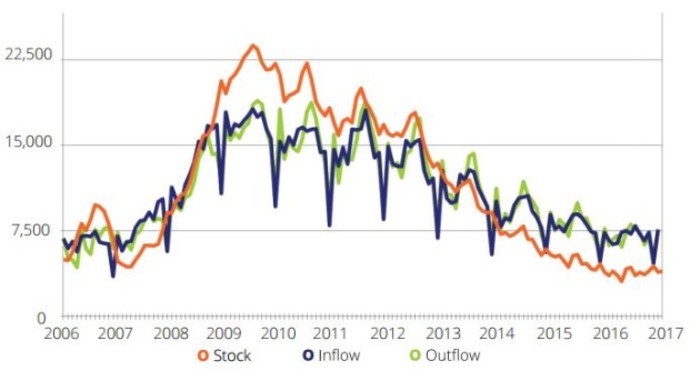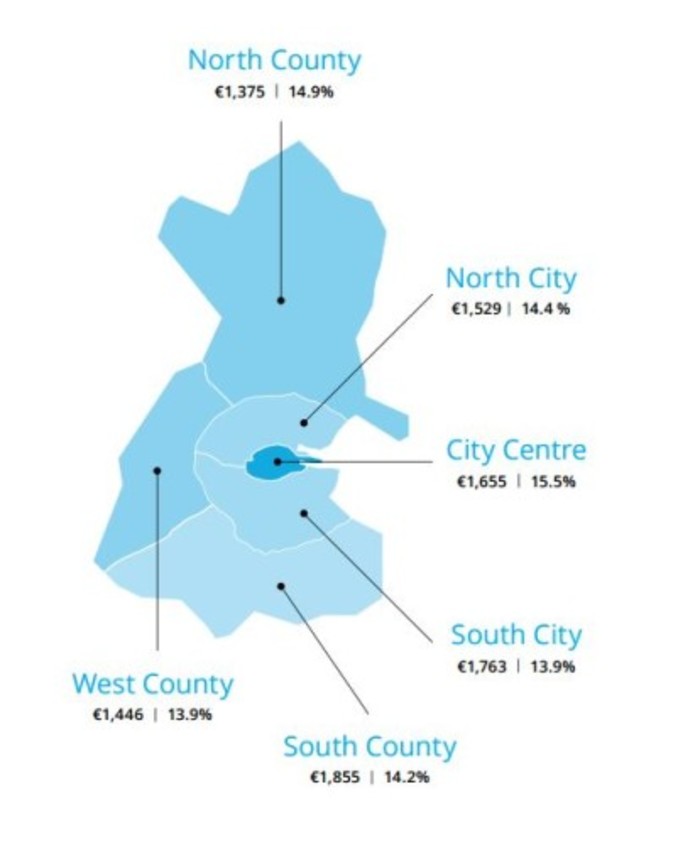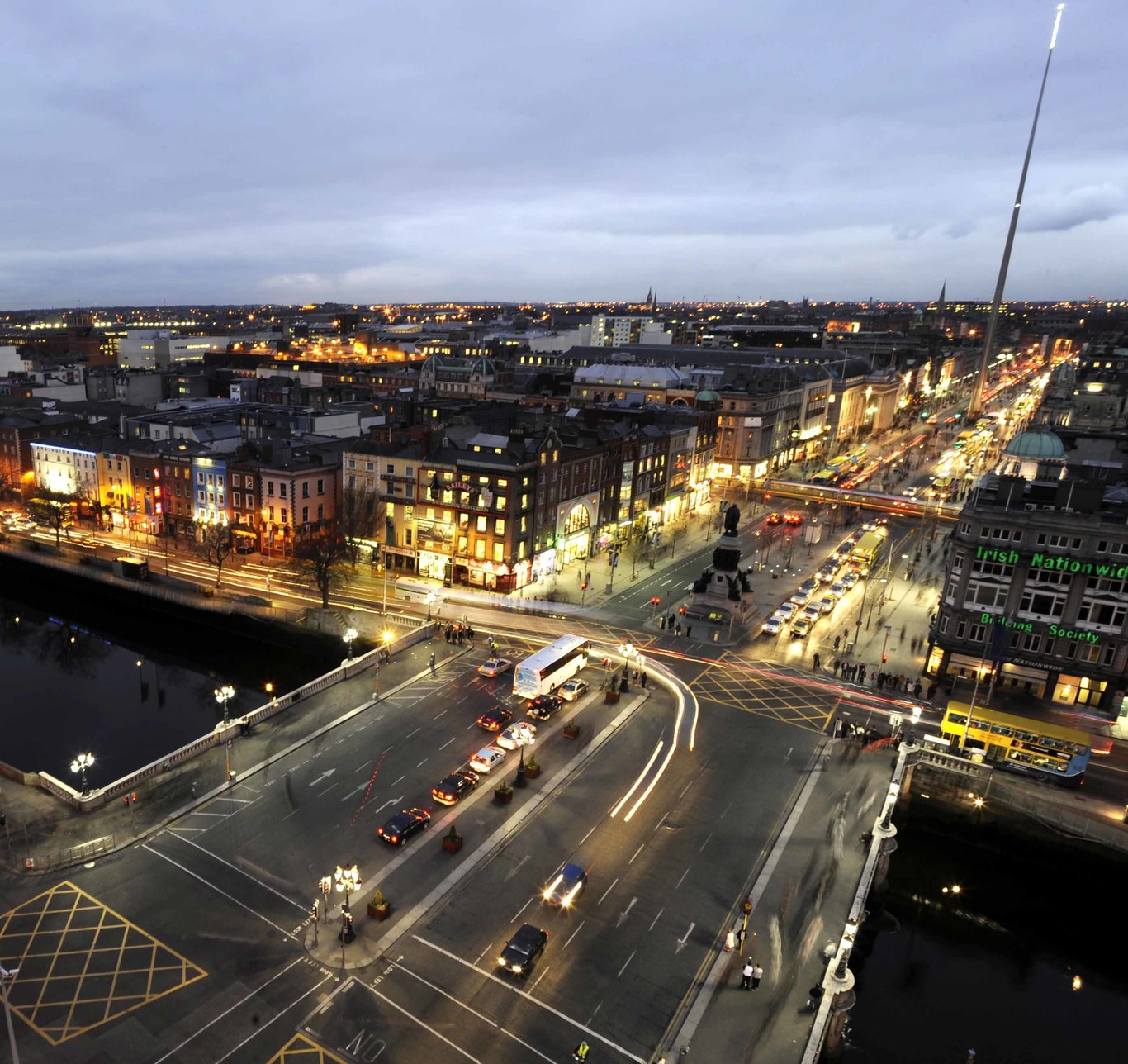'Time for Dublin to grow up' - Irish rents are now rising at their fastest rate yet
There are calls for height limits on Dublin buildings to be relaxed to increase supply.
NEWLY RELEASED DATA suggests that rents across Ireland are now rising at their fastest ever rate.
In the final quarter of 2016 the rate of inflation of rents across Ireland was 13.5% according to Daft.ie’s latest rental price report, which is compiled using properties advertised for rent on the website.
The average rent nationwide is now €1,111 per month. In Dublin rents are now rising by 15% per year, the highest rate seen since mid-2014. Those same rents are now 65% higher than prices were at their lowest ebb in 2010.
Perhaps more significantly, rents in the capital are now 14% greater than at their previous peak during the pre-crash days of early 2008.
In Cork, Waterford, Limerick, and Galway rental inflation has receded slightly but remains between 10% and 13% in all four cities.
 Rents around the country
Rents around the country
Click here to view a larger image
Daft.ie economist Ronan Lyons describes the problem as “a severe imbalance between supply and demand”, with just 4,000 homes available to rent across Ireland on 1 February.
By contrast, availability in April 2007, the lowest point for supply during the Celtic Tiger years, was about 4,400 homes.
The report is harshly critical of Dublin’s urban sprawl, noting that “greater Tokyo, with a population of over 27 million people, fits into 9,000 square kilometres”.
“Greater Dublin, with a population of less than 2 million people, takes up almost 6,000 square kilometres.”
In Dublin, city centre rents now stand at €1,655 -an annual increase of 15.5% – while rents the north of the city stands at €1,529 and the south city at €1,763.
Rents in Dublin as a whole rose an average of 4% in each of the last three months, the largest three-month increase on record.
 The number of houses available to rent
The number of houses available to rent
Click here to view a larger image
While rents are rising across the country, the trend is to be seen most acutely in the areas surrounding Dublin, with Meath, Louth and county Dublin showing yearly rental increases of 17.3%, 17.3%, and 14.7% respectively.
The phenomenon is also being seen further afield however: Longford (16.6%) and Westmeath (14.5%) are also showing large increases, suggesting the rental trap is becoming more of an acute problem outside the capital.
Grow up
Lyons describes the report’s findings as making “grim reading, not only for tenants but for policymakers also”.
The solution for driving population growth across the country without Dublin gradually ‘eating up’ the countryside requires several things to happen, according to the economist.
“Dublin needs to be allowed to grow up. Height limits of between four and six storeys in one of Europe’s fastest growing cities merely translate into lost jobs and higher rents,” he said.
 The rental market in Dublin
The rental market in Dublin
Click here to view a larger image
“Secondly, homes need to be built on brownfield, as well as greenfield, sites. Looking around Dublin, it is littered with grossly underemployed land, in the form of army barracks, golf clubs and bus depots, built on the fringes of the city in the past but now in prime central locations. A land tax would help achieve this reuse of our scarce and valuable urban land.”
Lyons contends that the biggest problem facing the rental sector however is “the extremely high cost of construction in Ireland, compared to other high-income countries” and that until this is addressed the apartments needed to address the supply issue simply won’t be built.
The government recently introduced new controls in designated ‘rent pressure zones’, where rent increases will be limited to a maximum 4% per year.
TheJournal.ie and Fora.ie publisher Journal Media Ltd has some shareholders in common with Daft.ie. Written by Cianan Brennan and posted on TheJournal.ie






